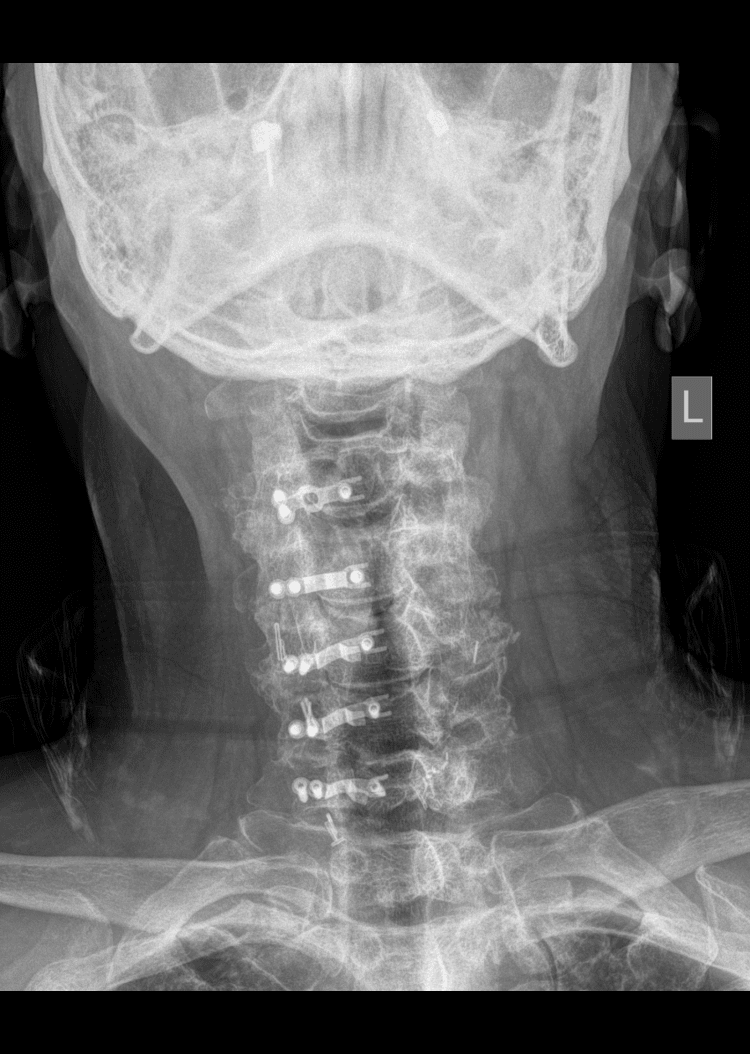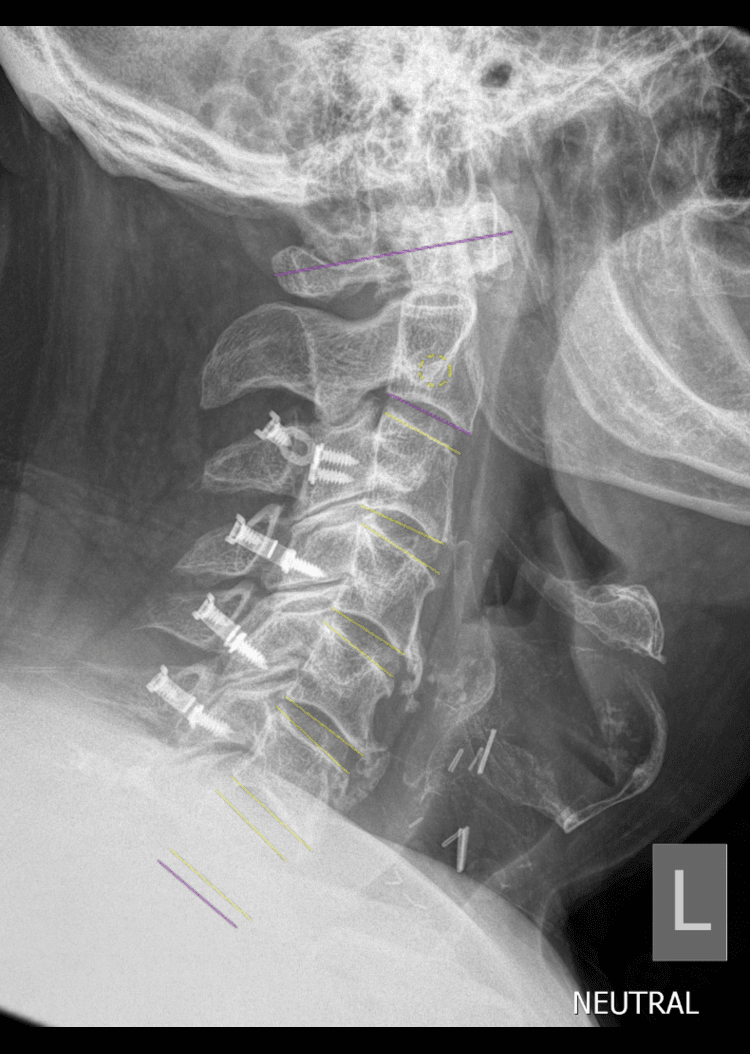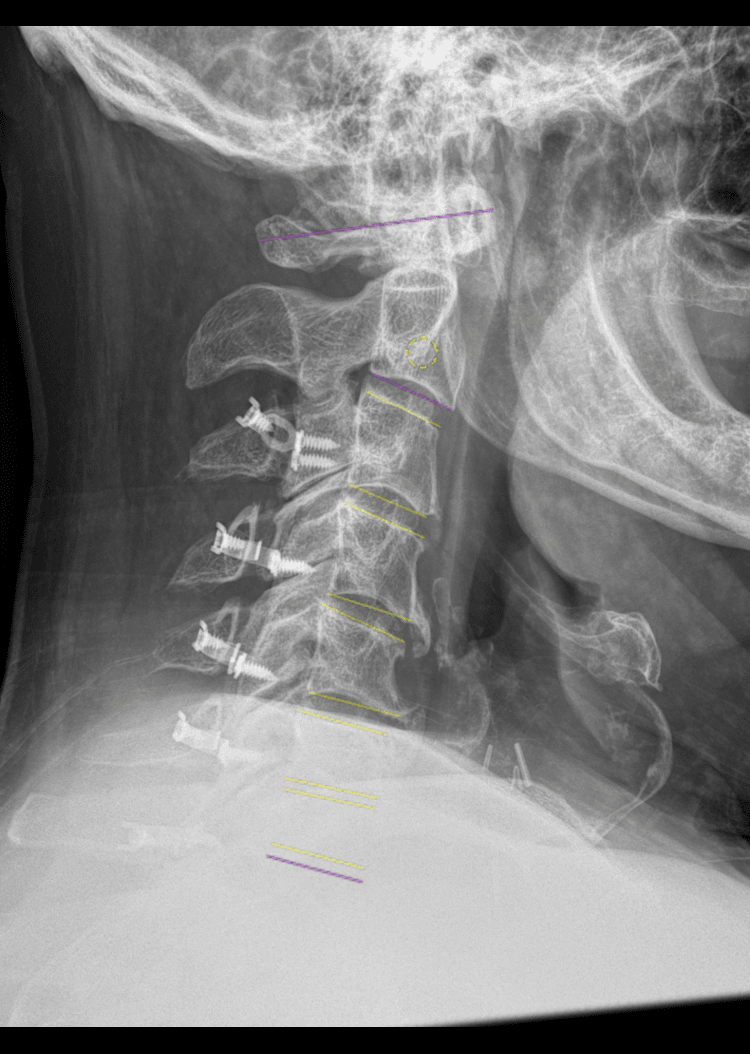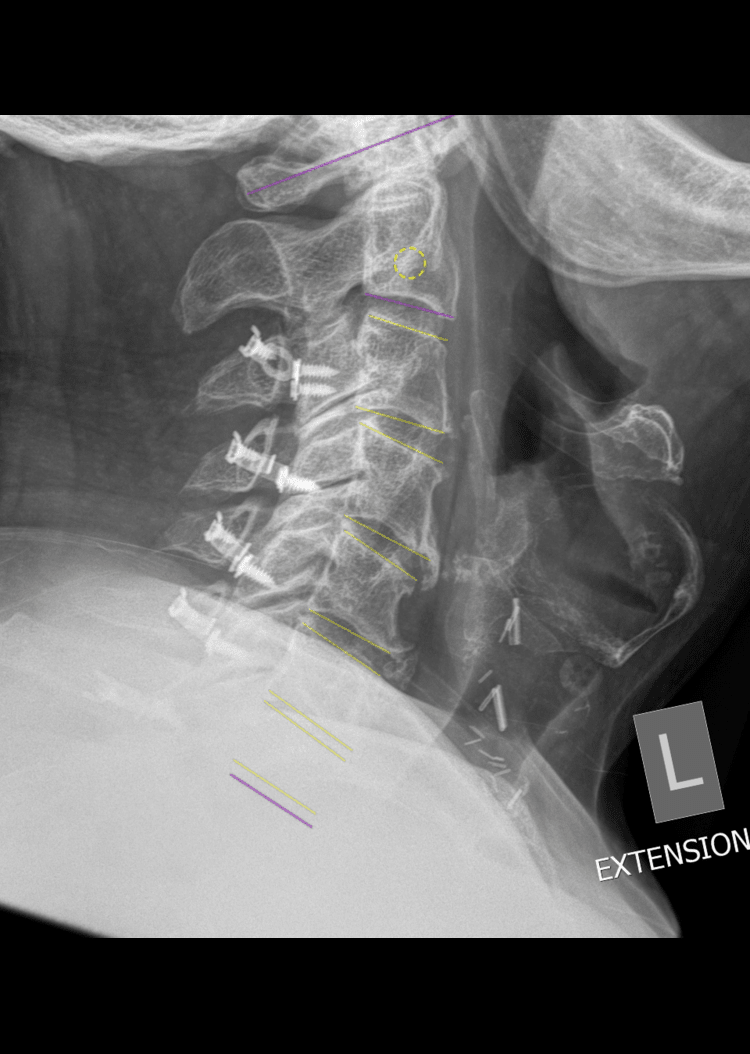Why Choose Cervical Laminoplasty?
This procedure is often chosen as an alternative to laminectomy and fusion for patients who need spinal decompression while preserving natural cervical motion and structure. It is especially beneficial for multilevel compression but is not suitable for patients who have lost their normal cervical lordosis.
What Happens During Surgery?
Preparation
- Hospital Admission: Admitted on the day of surgery with fasting as directed by your anaesthetist.
- Anaesthesia: General anaesthesia is administered to ensure you are asleep and pain-free.
Surgical Approach
- Patient Positioning: Positioned face down (prone) on the operating table with a specialized head frame.
- Incision: A midline incision is made at the back of the neck, with careful retraction of muscles and soft tissues to expose the cervical vertebrae.
Laminoplasty Procedure
- Hinge Creation: A/Prof Buckland thins the lamina on one side without complete removal to create a hinge.
- Opening the Spinal Canal: The opposite side is completely cut, expanding the canal like opening a door to relieve nerve pressure.
- Placement of Grafts/Spacers: Small bone grafts or spacers are inserted at the hinge to hold the new opening open.
- X-ray Verification: Intraoperative X-rays confirm proper placement of the grafts/spacers and the expanded canal.
Closure
After the procedure, the surgical site is closed with sutures and covered with a sterile dressing. Soft tissues are repositioned to minimize complications.
Postoperative Care and Recovery
- Hospital Stay: Typically 2-3 days, depending on recovery progress.
- Pain Management: Medications and early mobilization help manage discomfort; some stiffness is common in the first few days.
- Rehabilitation: A rehabilitation program (including physical therapy) starts shortly after surgery to restore neck mobility, strength, and function.
- Activity Restrictions: A collar may be worn for 4-6 weeks, with avoidance of heavy lifting, twisting, or overhead activities for approximately 3 months.
- Follow-Up: Regular appointments are scheduled to monitor healing and adjust rehabilitation plans as needed.
Post-Operative Imaging
Long-Term Outlook
- Symptom Relief: Many patients experience significant relief from neck and arm pain. Recover of symptoms of spinal cord compression like balance difficulties and hand clumsiness may take many months to recover, and recovery is typically incomplete if preoperative spinal cord damage exists.
- Motion Preservation: Unlike fusion, laminoplasty preserves more natural neck movement, which benefits long-term function.
* Individual outcomes vary; please discuss expectations with Prof Buckland during your preoperative consultation.




